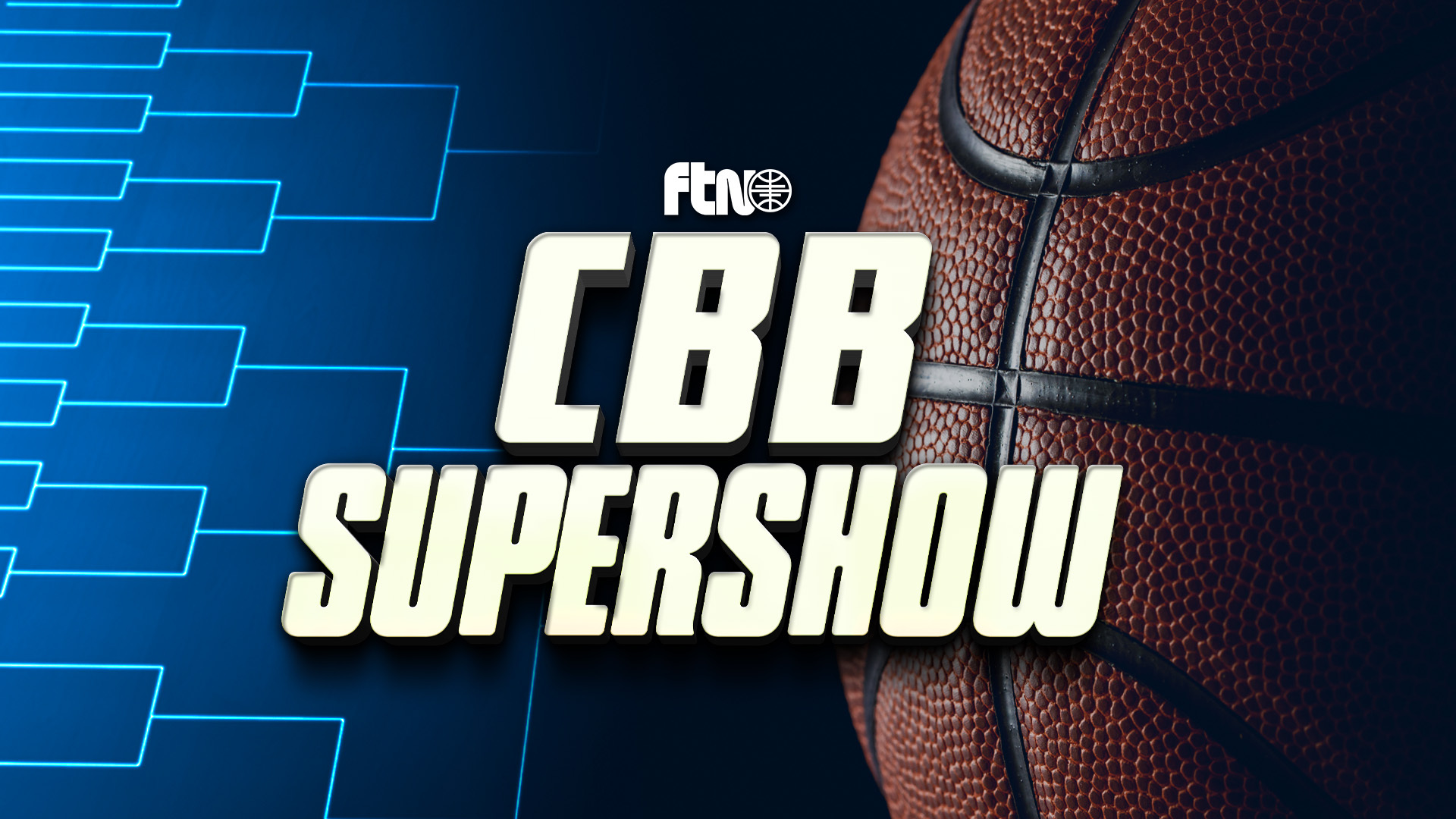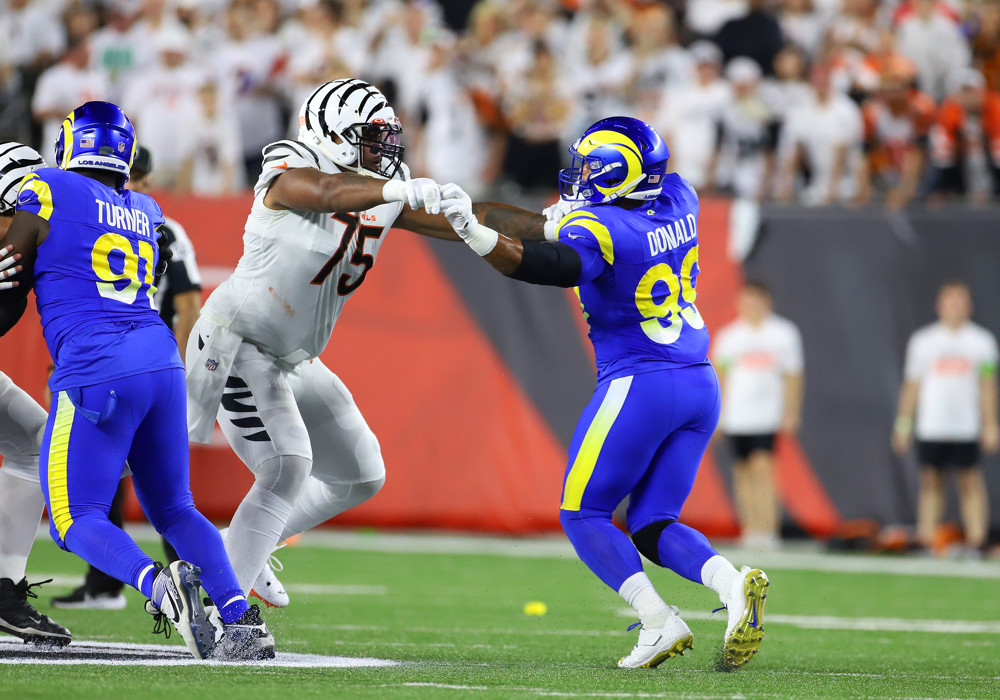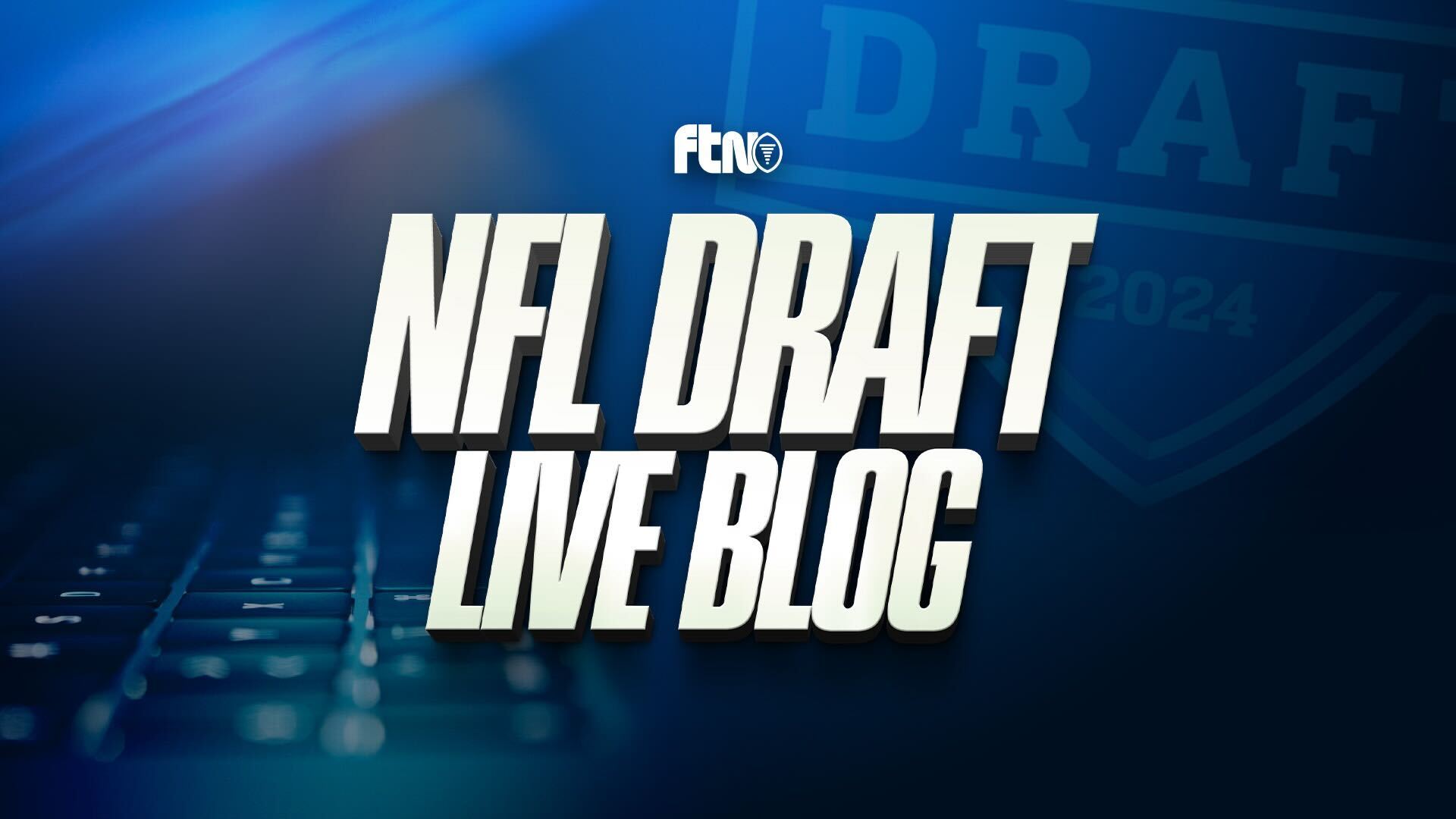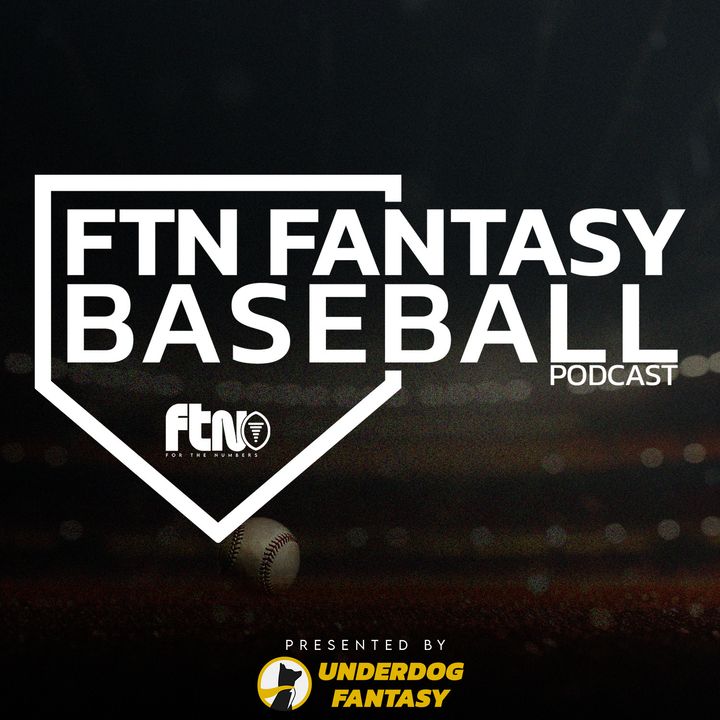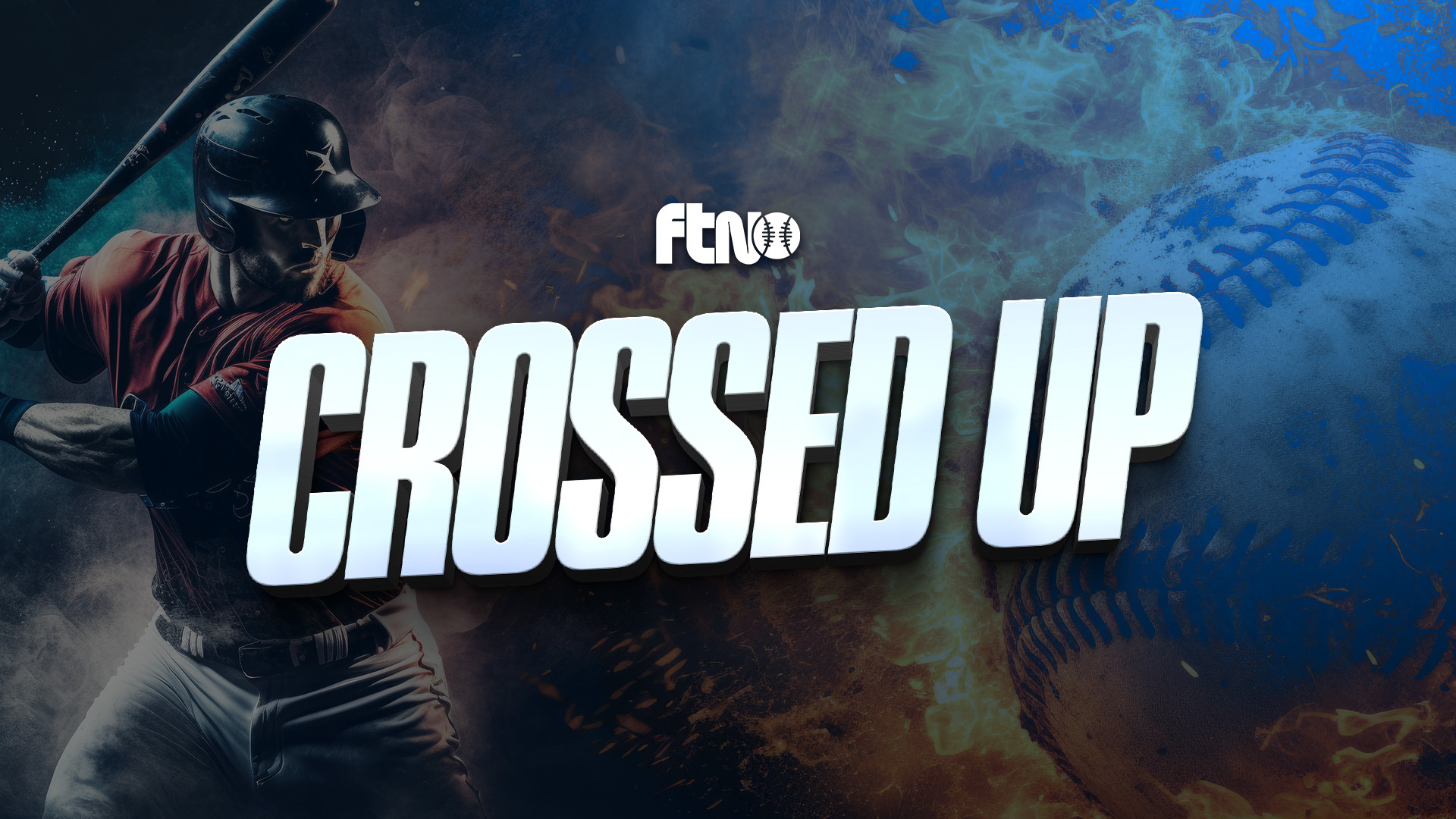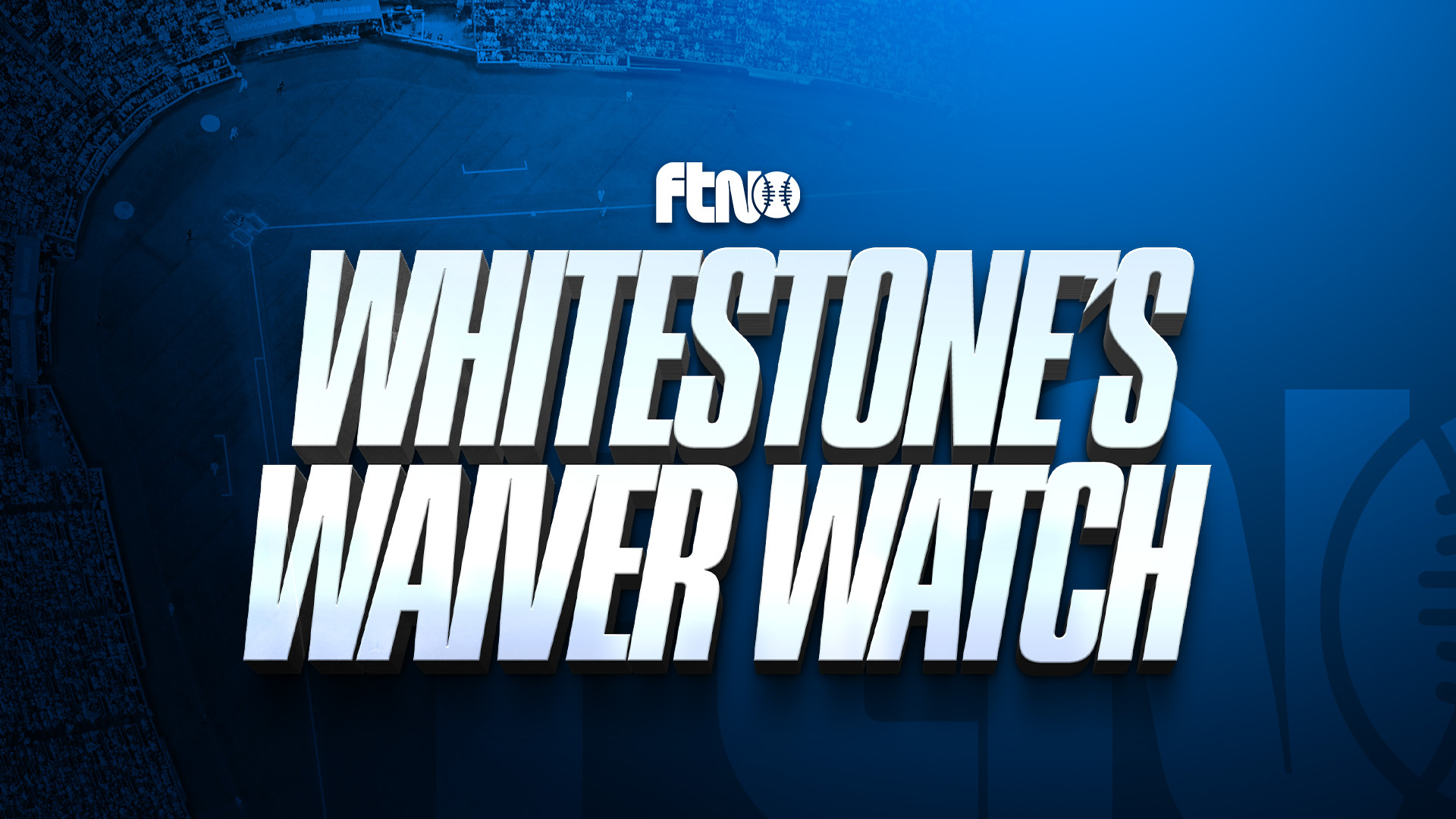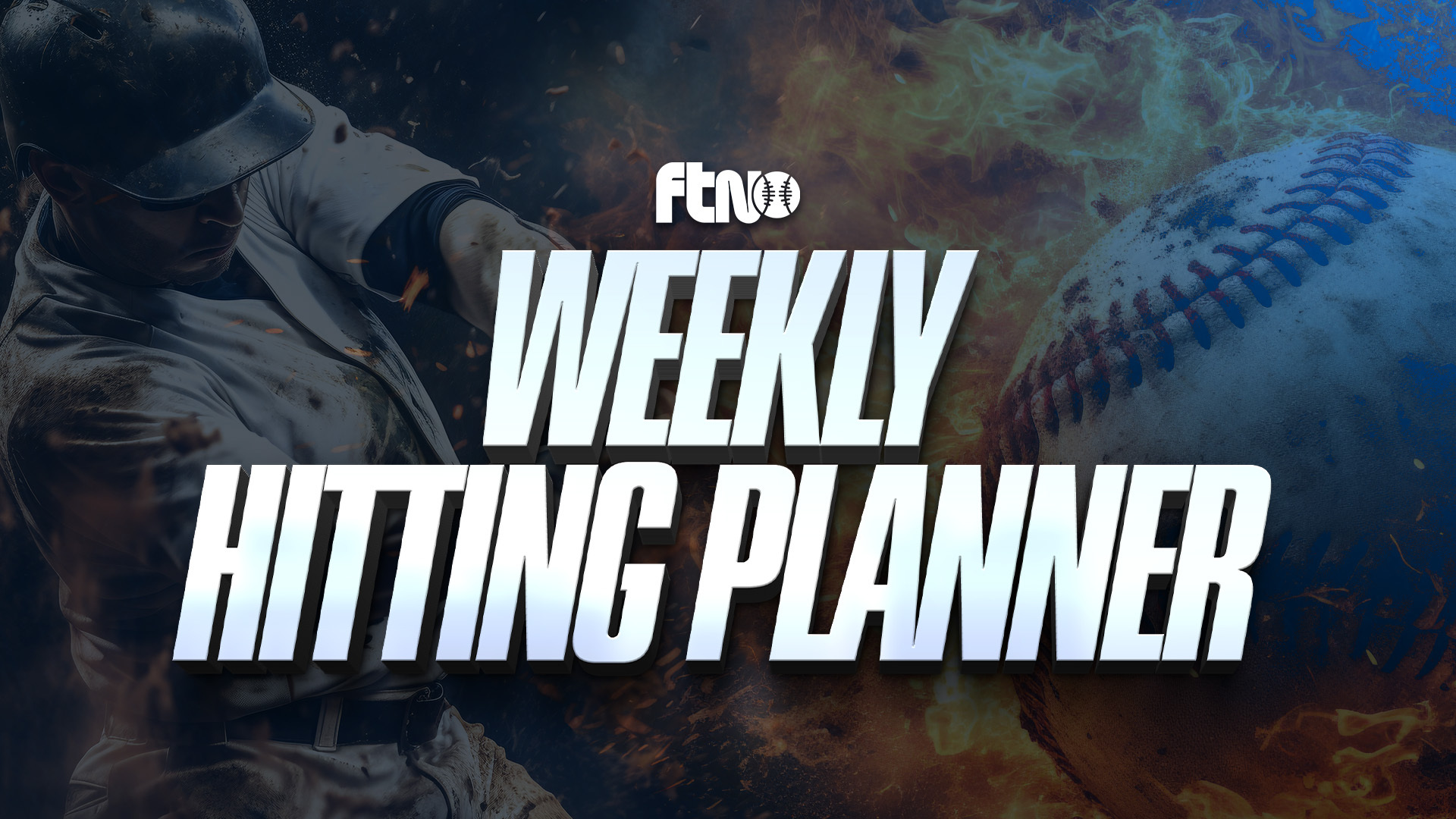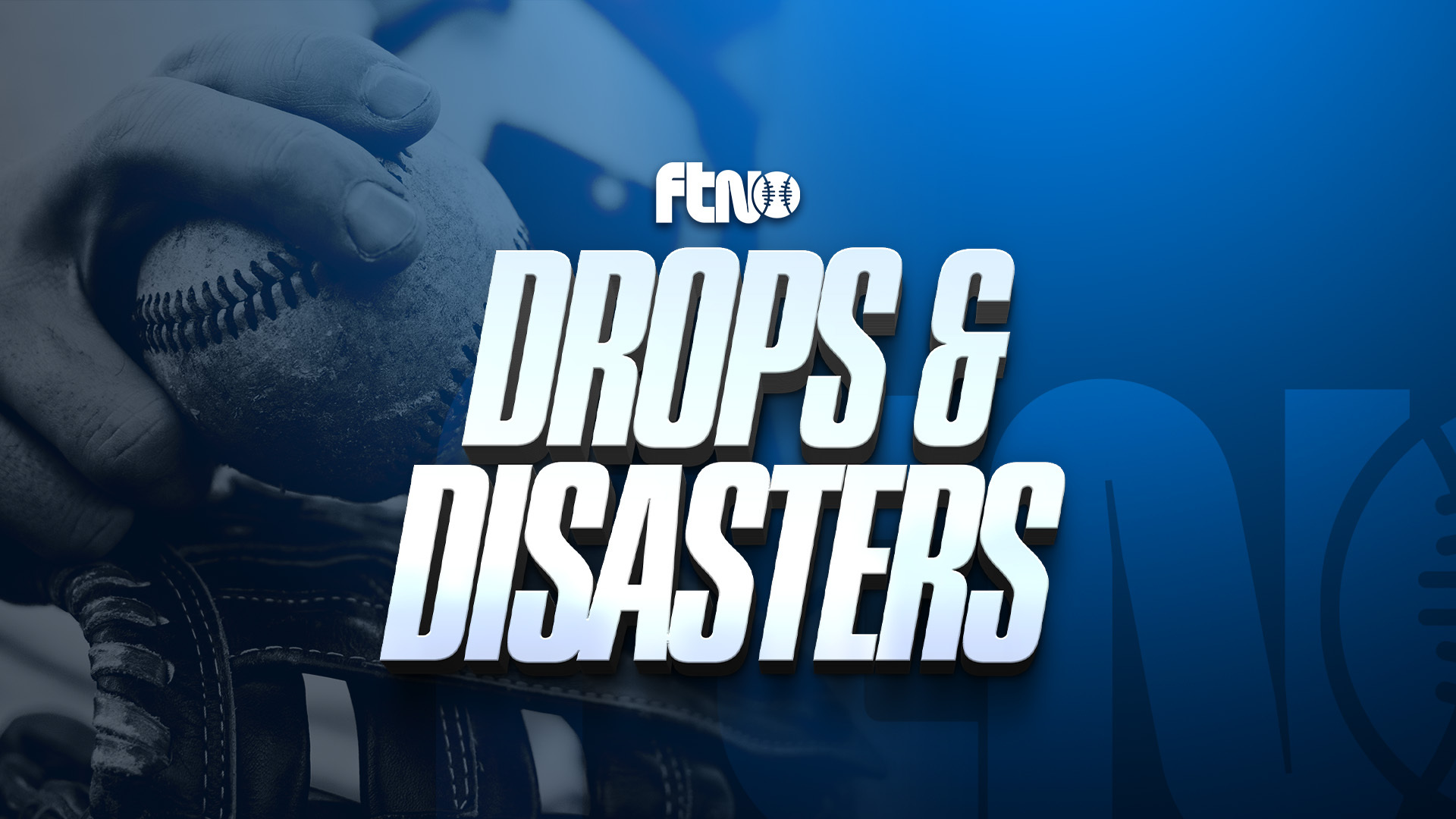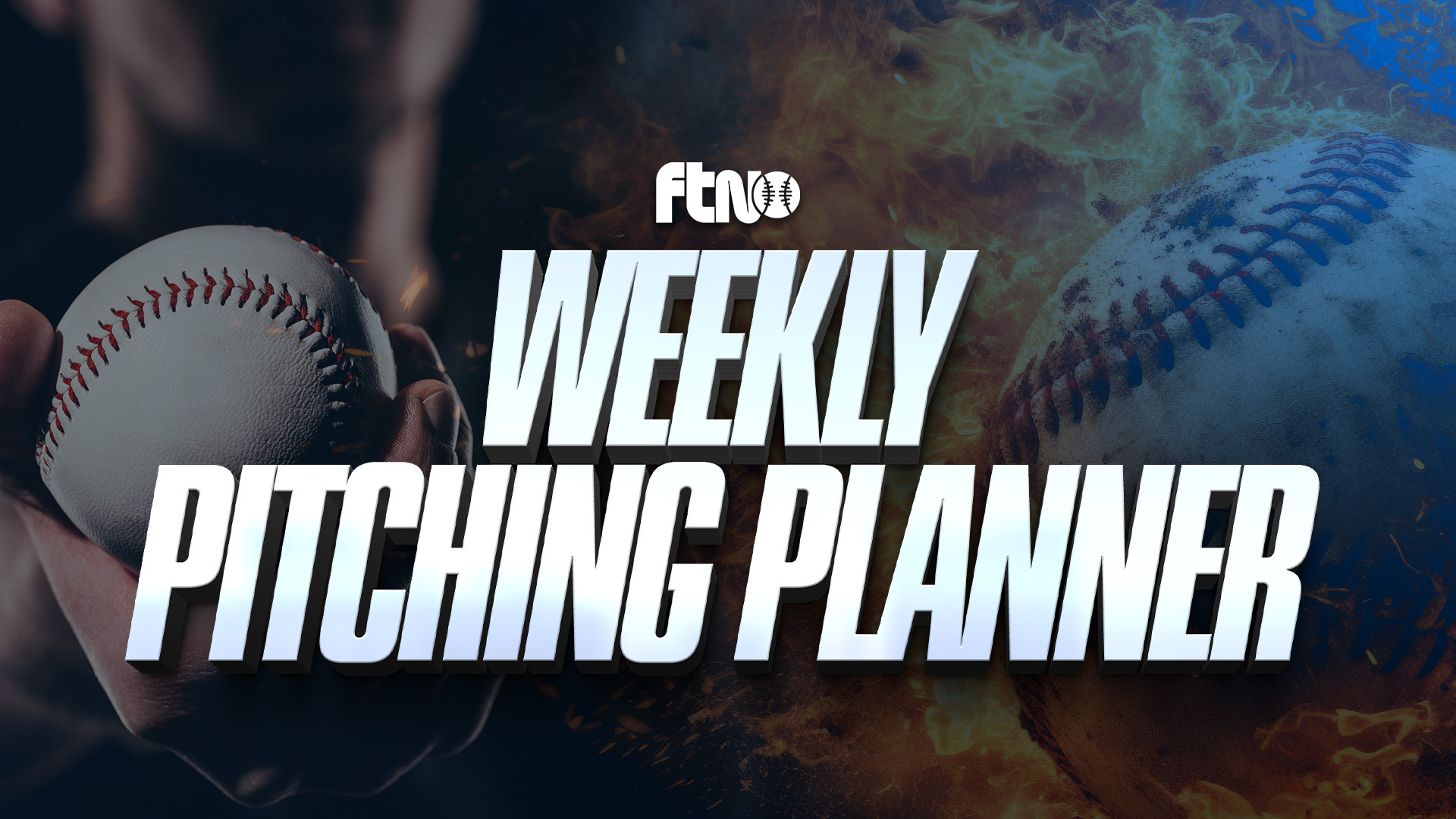
(It’s fantasy baseball draft season! The FTN Fantasy team and a host of helpful guests present our Ultimate 2024 Fantasy Baseball Guide. Check it out and prepare for the 2024 MLB season!)
Nick Pollack is the founder of Pitcher List and benefits from subscriptions to PL Pro.
Fantasy baseball decisions are hard to make. With so much data available, dozens of resources, and laborious tools, exhaustion sets in quickly and you still don’t have a clear picture of what to do.
I’m here to help and I’m going to make this as quick and as digestible as possible, outlining the tools and metrics I use at Pitcher List to get information I can’t get elsewhere. Here we go.
Common Pitfalls & the Pitcher List Secrets to Help
Pitfall 1: Using a pitcher’s overall stats instead of looking at their individual pitch’s stats.
I see this often and you can gain a massive edge by taking the small extra step. The end product of a pitcher’s overall ability — ERA, WHIP, strikeouts, walks, SwStr rate, BABIP, HR/FB, etc. — is an output of their individual pitches. If you take the moment to study the individual pitches, then you can grasp the outliers, shifts in performance, and future trends far better than the output. After all, Process > Results.
Secret 1: Use Individual Pitch Data from the Repertoire section on Pitcher List Pages
I built the Pitcher List player pages for the sole purpose of getting better data to view pitch data. Head to the Repertoire table where we have 100% Statcast data (and our own stats derived from it) that gives you all the granular data you need:
There is so much data and it can be overwhelming. I originally made these three images (all three here) with my scribbles to outline the important elements and Vlad made the great point that I look like this. So instead, I will try to take a moment and outline the proper process I use to grasp a full pitcher’s approach and arsenal.
I cannot emphasize this enough. Take the time to read this section more than any other. This is the process I’ve honed after ten years of studying pitchers and while I’m still adding even more (see Secret 4!), discerning success and failure from these numbers is the greatest skill you can get.
When I do my research on a pitcher, I have three questions I have to answer:
- How does he get whiffs?
- What pitches does he throw for strikes?
- How badly do his pitches get hit?
In other words:
- Can he earn strikeouts? (K%)
- Does he throw strikes? (BB%)
- Do his pitches get crushed? (ERA and WHIP)
How do we do this? By understanding his arsenal. First, investigate his primary fastball (Is he four-seamer or sinker focused? Is it a split?), followed by his secondary offerings. To outline this process, we’ll use our poster boy, Luis Castillo, but first, I want to showcase what I look for with each pitch type.
Fastball Approach
These are the stats I look at to get a quick understanding of their fastball approach.
Four-seamer Usage & Sinker Usage: What is this option No. 1?
These days, we’re used to about 40% fastballs, and seeing above 50% tells you this pitch better be good or he’s not going to be fun to roster. Sub-30% often means it’s a four-seamer/sinker split, or you have a cutter or slider that you throw more often (what up, Aaron Civale). In some cases, you may need to look into usage vs. LHB or RHB, which you can filter above the table. Then you go down the rabbit hole of looking into what works vs. LHB or RHB … It’s fun stuff.
MPH: Is it elite velocity or not?
We want at least 94 mph. If it’s under that, he better have some special qualities on it (elite movement or pristine command, the latter of which is incredibly rare)
O-Swing%: Does the pitch induce swings out of the zone?
This is more for sinkers — we want to see over 30% to suggest he can jam batters (40%-plus is elite). Over 30% for a four-seamer means he’s aggressive up in the zone, likely.
SwStr%: Does this pitch get whiffs?
It’s rare for a sinker to get whiffs, but if it’s a four-seamer it dang well better be above 10% if not 12% or better. If it’s under that then it better earned called strikes.
CS%: Is this used to steal called strikes?
If it’s above 20%, then this is primarily a pitch to set up his secondaries. If there isn’t a stellar changeup or breaker, then this usually doesn’t last. High called strike fastballs are a common trait of volume arms.
Str%: Does this pitch earn strikes?
It’s rare to find a primary fastball sit under a 60% strike rate, and generally I hate seeing sub 65% for fastballs. If it’s low 60s, then he better have a secondary pitch with a 65%+ strike rate or walks are coming frequently.
ICR% (Located under Statcast): When it allows contact, is it punished?
ICR is Ideal Contact Rate, which buckets all contact that are good for batters, not just barrels. (Jon Metzalaar’s introduction to the stat is a must read.) It’s the best way to say “is it good for the pitch if contact is made?” I hate seeing over 40% on fastballs and absolutely adore any heaters under 35%.
hiLoc% (Located under Approach): Is he elevating the pitch?
Instead of a heatmap, I just bucketed all high pitches into a number to make things easier (high location %). 60%-plus shows legit intent, 50% is the baseline, and under that means he doesn’t want to get that dang thing upstairs at all.
iLoc% (Located under Approach): Is he jamming batters with fastballs?
It’s more for sinkers, which I will always preach should be sitting inside, with the backdoor sinker saved for the few skilled enough to execute it on command. Over 40% is a lovely sight.
Secondary Pitches
This is a little trickier. Before I list the stats, I need to get a sense of what he turns to and when. Some arms are like Chris Bassitt, and I throw up my hands in protest and skip over a lot of this to just look at the individual stats of each pitch. Normally, you see anywhere from a two- to four-pitch mix, with secondaries filling one of these roles:
Reliable Strike Pitch: The most thrown secondary that comes with a strike rate near 65%.
Strikeout Pitch: The highest SwStr% pitch, with the highest PAR% and 2-Str%.
Opposite-handed secondary: The pitch that gets used when facing opposite-handed batters. Usually the rare changeup for a RHP to a LHB or a cutter for a LHP to a RHB.
From there, these are the most important stats (some of these are the same as above):
SwStr%: Does this pitch get whiffs?
CS%: Is this used to steal called strikes?
Str%: Does this pitch earn strikes?
ICR% (Located under Statcast): When it allows contact, is it punished?
loLoc% (Located under Approach): Is he jamming batters with fastballs?
It’s not the most important, but those with elite loLoc% marks and good strike rates on their secondaries thrive. Zac Gallen is the perfect example.
Early% (Located under Approach): Is this used to steal strikes early in counts?
You can quickly see if this is a reliable offering of just a surprise pitch that’s featured for what I call “Free Real Estate” — an early strike in the zone as batters are usually passive on early secondaries.
2-Str% (Located under Approach): Does he mostly feature this as his strikeout offering?
This is imperative to determine if it’s a reliable pitch or just one to whip out late. If it’s a high 2-Str rate, then he better have another secondary that earns plenty of strikes without a poor ICR%.
PAR% (Located under Approach): How efficient is he at striking out batters when he throws it?
An incredibly high PAR% can tell you about unsustainability of results. Generally above 30% is ridiculous and not reasonable, while a sub 20% suggests potential positive regression (if it’s a whiff pitch).
With all of these specific data points, let’s return to the original three questions:
- How does he get whiffs?
- What pitches does he throw for strikes?
- How badly do his pitches get hit?
Luis Castillo, you’re up. Let’s break him down.
First, we explore his fastballs. Here are the tables I’m using on Luis Castillo’s Player Page — Notice how I have “ALL” selected for the years in order to view his changes across multiple seasons.
Since his four-seamer has triple the usage, we’re going to start there. It dropped in velocity, but its usage jumped 11 points. SwStr climbed to be 100th percentile, and his strike rate was fantastic near 70%.
These are all elite marks. There’s some digging to do as to how those results improved, especially when the velocity dipped, (Spoiler Alert: Secret 4 will also help massively with this) but for now, we keep going, looking into his batted ball results (are those strikes getting hit hard?) and his approach with the pitch.
Here, we notice the large drop in ICR rate to just 37%, a great mark for a four-seamer thrown 44% of the time, and it helps explain a bit of the xwoBACON being 83rd percentile of all four-seamers from SP.
And finally, it’s his Approach table, which shows up how his hiLoc% (high location) increased nearly ten points, which allowed him to take advantage of his four-seamer’s pitch shape to earn more whiffs and create worse contact. That’s part of the solution right there!
We can also see he’s using this heater more often early in counts, while its putaway rate regressed normally as batters saw the pitch more. No shock there, but still a great pitch for strikeouts.
We need to also take a look at his sinker, which fell in usage to make more room for the four-seamer, and it looks like a major positive with fewer whiffs across the same number of strikes. In addition, its O-Swing went up to a great 31% clip, suggesting higher iLoc% against right-handers.
Its ICR rate is solid at 37.5%. Not the greatest I’ve seen for sinkers, but it’s all right as a surprise pitch.
Look at that, iLoc% did rise to 45%, while its putaway rate also grew to 20%. Makes me think he’s throwing in some surprise front-hip sinkers to LHB as well. (Here is where I’d use the SPLITS in the top left to switch between vs. LHB and vs. RHB, but this article is already too bloated)
I do notice he’s not featuring it much when behind in counts, though. I wonder if he could increase that with his sinker as an inside sinker that actually jams right-handers is the perfect pitch to escape 2-0 and 2-1 counts for a quick out.
On to the secondaries. This one is pretty quick and easy.
Using the same tables for his slider and changeup, we’ll quickly identify his slider as a trustworthy breaker, throwing it early in counts, featuring a great 65% strike rate, and earning whiffs as it efficiently strikes batters out.
The changeup isn’t the pitch it used to be in his early years, but it still does a serviceable job earning strikes, avoiding damage, and, well, it could be a bit better with just an 18% PAR rate despite a whopping 40% 2-Str rate. It’s reliable enough, just not the wipeout pitch of old.
Now, let’s return to the three questions:
How does he get whiffs?
Four-seamers, sliders, and changeups. Three legit weapons that make his overall 16% SwStr rate seem mostly sustainable, though it’s pretty safe to assume he won’t carry a 100th percentile four-seamer SwStr rate, simply for its clear peak. Still likely to be highly successful, of course, and the 27% strikeout is clearly sticking around.
What pitches does he throw for strikes?
All of them. Looking deeper, his changeup is featured more often against left-handers, with a 63% strike rate, explaining why he has a 7% walk rate, not a 5% (and why do he throw the sinker vs. LHB 10% of the time? Stop doing that, especially with its sub 60% strike rate. Please.).
How badly do his pitches get hit?
His slider gets demolished by left-handers (All Pitches / vs. LHB / Statcast Table) with a 48% ICR, which is fixable if he eliminate plenty of breakers left in the heart of the plate, while the sinker can aggressively miss spots and lead to damage against left-handers, too. I really don’t know why he throws that sinker to LHB.
Against right-handers, everything is superb (All Pitches / vs. RHB / Statcast Table). Changeups and sliders sit below 30% ICR, and both fastballs hover a 35% ICR right. It’s glorious.
Using the same tables for his slider and changeup, we’ll quickly identify his slider as a trustworthy breaker, throwing it early in counts, featuring a great 65% strike rate, and earning whiffs as it efficiently strikes batters out.
The changeup isn’t the pitch it used to be in his early years, but it still does a serviceable job earning strikes, avoiding damage, and, well, it could be a bit better with just an 18% PAR rate despite a whopping 40% 2-Str rate. It’s reliable enough, just not the wipeout pitch of old.
Now, let’s return to the three questions:
How Does He Get Whiffs?
Four-seamers, sliders and changeups. Three legit weapons that make his overall 16% SwStr rate seem mostly sustainable, though it’s pretty safe to assume he won’t carry a 100th percentile four-seamer SwStr rate, simply for its clear peak. Still likely to be highly successful, of course, and the 27% strikeout is clearly sticking around.
What Pitches Does He Throw for Strikes?
All of them. Looking deeper, his changeup is featured more often against left-handers, with a 63% strike rate, explaining why he has a 7% walk rate, not a 5% (and why do he throw the sinker vs. LHB 10% of the time? Stop doing that, especially with its sub 60% strike rate. Please.).
How Badly Do His Pitches Get Hit?
His slider gets demolished by left-handers (48% ICR), which is fixable if he eliminates plenty of breakers left in the heart of the plate, while the sinker can aggressively miss spots and lead to damage against left-handers, too. I really don’t know why he throws that sinker to LHB.
Against right-handers, everything is superb. Changeups and sliders sit below 30% ICR, and both fastballs hover a 35% ICR right. It’s glorious.
What It All Means
Understanding those individual pitch elements can help us grasp potential growth for Castillo. We can see the slider and sinker have clear paths to improvement against LHB, while he has the skills in place against right-handers that appear mostly sustainable, possibly with a small dip in whiffs from his four-seamer.
It’s that easy, y’all. The data is there and ready for you to take advantage of.
Pitfall 2: Using Batted Ball Event stats to grade a pitch (xAVG, wOBA)
If you’re grading a pitch based on the conclusion of a plate appearance, then you’re often ignoring the heavy majority of its pitches. After all, the final pitch of a plate appearance is a heavy minority of all pitches thrown by a pitcher. For example, curveballs are often featured as 0-0 pitches (rarely a base hit in play) or two strike pitches (often a strikeout), while they are rarely featured in three-ball counts, which eliminates walks, lowering their wOBA.
Because of this, fastballs get graded far worse than secondaries due to their higher usage in three-ball counts and their reduction in two-strike counts. In addition, how a pitcher features a specific pitch can alter their BBE stats, like Tyler Glasnow’s curveball and Kodai Senga’s splitter, which are both heavily used out of the zone and saved for two-strike counts. Of course they have low wOBA and low xAVG marks — they can’t be hit when they are in the dirt.
Secret 2: Use Strike%, SwStr%, ICR%, and PLV instead
There is far more to use instead of these four metrics, but you’ll get a far better understanding of a pitch’s success with these four. Why? Because you have three of the major fantasy category stats represented in these four stats:
- Strike% = Limiting Walks (WHIP)
- SwStr% = Earning Whiffs (K’s)
- ICR% = Contact Quality (WHIP/ERA)
- PLV = Overall Effectiveness (ERA)
Think of it this way. There are three ways that pitchers have success on the mound: They miss bats, they limit walks, or they limit hits. Looking at a pitch’s SwStr% outlines if this pitch helps with strikeouts, Strike% tells us if this helps reduce walks, and ICR% answers if this pitch is a risk for damage in play. (If you are unfamiliar with ICR% or Ideal Contact Rate, I heavily recommend this article from Jon Metzelaar)
Some quick guidelines for each stat:
| Stat | Fastball Ideal | Secondary Ideal |
| Strike% | 65%+ | 60%+ |
| SwStr% | 12%+ | 17%+ |
| ICR% | Under 40% | Under 35% |
| PLV | Above 5.00 | Above 5.25 |
The risk/reward of pitchers is simple. Either throw incessant strikes and risk making mistakes that batters punish, or nibble around the plate, throwing fewer strikes but resulting in less demolition in play.
So, the best pitcher in baseball would have a 100% strike rate with a 0% ICR. Throw in SwStr% to get a sense of those strikes being whiffs, a sprinkle of PLV to give you the general grade for extra flavor and BLAMO! You have yourself a super quick idea of a pitch’s quality.
At the end of the day, don’t use barrels or hard-hit rate. Use Ideal Contact Rate (was the batted ball good for the batter or the pitcher?) and pair it with strike rate. It’s better, y’all.
Pitfall 3: Treating All Successes and Failures The Same Way
I see this one often. We see a pitcher suddenly rack up double-digit strikeouts out of nowhere or they go on a month-long streak and suddenly, they should be compared with another pitcher who has flexed the same results at times.
The truth is, every pitcher has their peaks and valleys and without an understanding of the pitcher’s unique skillset, you won’t know when to place a strong FAAB bid.
Secret 3: Use the Pitcher List Game Log to Find the Anomaly
An example I often use for this one is Chase Silseth, who struck out 10 out game and 12 shortly after. It seemed like he hit a new level, but a look at his game log would tell you differently:
The takeaway here is how Silseth suddenly earned a ton of whiffs one game with his slider, then 12 with his splitter in the second. His traditional skillset is limited — mediocre fastball with a good slider and inconsistent splitter (only but the best are) — and observing the individual pitch performance from these two games would show the anomalies of each of those starts.
This is in tandem with Secret 1. Once you’re able to establish how a pitcher earns their outs, then you can monitor game-by-game to see how they succeeded and failed. Maybe he gained velocity, maybe he’s leaning into a slider, or maybe it was just one of those nights where it all clicked. Pitcher skillsets are wildly different and using the game log to understand the peaks and valleys allows you to grasp when a legit shift has occurred (and if you need help, my SP Roundup blurbs are in there too!).
Pitfall 4: Using Velocity Alone to Grade a Fastball
I was been guilty of this one myself for years, and it’s only because of some incredible revelations in recent seasons that I’ve been able to get a better grasp of what makes four-seamers and sinkers effective. The data is there for you to use and what’s even more exciting — you can see how it would improve with time. Sadly, not all velocity is the same.
Secret 4: Use The PLV Pitch Type App
Bear with me on this one. This is a gamechanger and will make you a tremendously better analyst overnight if you take the time to read this.
Note: The apps featured in this article are PL Pro-exclusive and are currently available for free until Jan. 31 — Sign up to PL Pro Yearly today for 25% off with promo code FTN25.
I cannot express enough how valuable our Pitch Type App is. You may have heard of the “shape” of pitches, and without an easy way to quickly get that data, it has been difficult to get a general understanding of what a good shape was.
This app makes it absurdly easy and is imperative to use to grasp the potential of an arsenal, specifically four-seamers. Here is a cheat sheet I made for this article:
Looking at this, you should have the same assessment that I do about Reese Olson‘s four-seamer. It’s not good, is it. Sure isn’t. Don’t worry, his slider and changeup are great, and the sinker is good enough to overstep this heater.
Let’s go over the cheat sheet quickly. There are four qualities here that I think are most important that I’m going to review first. I’m currently calling them the FAN-tastic Four as they lead to the most fanned batters. I’m workshopping it, y’all.
Velocity: You already understand this one. Generally, 94/95-plus is where four-seamers want to live. 91-94 is where is gets rough.
Extension: The higher the extension, the better. It starts to have a larger effect around 6.5, and guys like Zack Wheeler get a 7.3-inch extension on their fastball. Ohhhh. Yeah, that’s a big reason why it’s so dang good every year. The other side can be rough, explaining why someone like Jesús Luzardo‘s heater doesn’t succeed as much as you’d think with 96 mph, as he gets just 5.7 inches of extension. That’s rough.
Induced Vertical Break (iVB): This is a big one. It’s a fancy way of saying “rise” and you obviously want it on your four-seamer if you plan to get whiffs. The best arms get stupid high marks around 19 inches, but breaking 17 is a huge win for any four-seamer. However, if someone like, oh, I don’t know, Hunter Greene gets 14.9 inches, you can understand why that pitch doesn’t dominate as much as you’d think, while someone like Nestor Cortes gets 19 inches of rise on his. So that’s why that pitch does so well at just 91 mph. Yes and there’s one more reason…
Adj. Vertical Approach Angle (VAA): …which is VAA, one of the cooler “oh duh, why didn’t I think of that?” revelations I’ve had in recent years. The Adj. stands for Adjusted, which says “this angle is due to where the pitch landed.” A pitch located upstairs has a different angle than a low one, after all. Here’s a great primer on VAA from Alex Chamberlain, which should help grasp why it matters. Broadly speaking, if you’re trying to hit a ball up in the zone, you have to have an uppercut swing, which is at a somewhat steep angle from down to up as the bat goes through the zone. If you throw a steep angled pitch, you’ll match that bat path, which means there’s more time for the bat to make contact. However, if you have a flat angle, the ball spends less time in the path of the bat.
When you throw high pitches, you’re trying to miss above the bat, which means you want a flatter angle as bats will have steep swing paths. When you throw low pitches, you’re trying to miss under the bat, which means you want a steeper angle as bats will have a flatter swing path.
It can take a moment to wrap around that concept but just know this: In that chart above, if the number is 1.0 or higher, that’s a flat angle and good for high four-seamers. We’re hoping for 1.2 or higher, and if it’s low, it explains why a fastball is more hittable than others (Hunter Greene has a 0.9 and it upsets me).
Velocity, Extension, iVB, and VAA are the main elements that characterize the shape of a four-seamer and are so important to grasp if a pitcher can be more or less than what they are. We’re still deciphering the weights of all of these, but for the most part, a high iVB with either good extension or VAA will be enough to be competitive. Throw in good velocity too and you have yourself a legit pitch with just three of the four. Now you just need to get the dang thing upstairs.
I didn’t even mention the heatmaps Kyle has added to the bottom of this app, which can help you grasp if the pitcher is taking full advantage of the pitch’s shape. These heatmaps can be a great well to tell if the pitcher is squeezing out the most they can out of a pitch (Zach Eflin elevating a poor heater only with two-strikes), or if there is room to grow if they can locate their stuff better (George Kirby, stop throwing them away to RHB!).
Here are the simple rules I follow for ideal location for each pitch type and their pitch shape (all assuming RHP):
Four-Seamers
- Does it have heavy glove action?
- Don’t use it upstairs. Use it gloveside up-and-in or down-and-away (backdoor, you sneaky minx Corbin Burnes) to LHB and down-and-away to RHB
- Does it have three of great Velo, Ext, iVB, and VAA?
- Get that dang thing upstairs, ya dingus!
- If the VAA is terrible, could be used as a low called strike offering, especially with a touch of glove-side cut action (Zac Gallen)
- Does it have terrible marks across the board?
- Stop throwing it and figure something out with the sinker or cutter
Sinkers
- Does it have extreme arm-side movement?
- Mid-to-up and inside to both sides of the plate
- Avoid the middle. PLEASE. RHB should see the pitch in and off the plate, LHB should see it barely sneak back over the plate.
- Does it have extreme vertical movement DROP?
- That’s a true sinker and should be located down and under the zone.
- Go for the “Neckbeard” approach of Dallas Keuchel, nibbling just outside the bottom and sides of the zone, tempting batters to swing at pitches they can’t hit well.
- Does it have neither?
- You better save it for the rare super-inside to a RHB and not throw that thing in other situations unless you have pristine command to go front-hip to LHB.
- Like never with two strikes, why would you do that?
Cutters
Unless it’s a massively aggressive cutter that’s actually a slider, cutters are best used to nullifying opposite-handed batters, jamming them inside and mid-to-up, or as a backdoor pitch to steal a strike.
Some (Joe Musgrove, Yu Darvish, Aaron Civale) lean on their cutter heavily in the zone as their strike pitches and that can work well, too.
Sliders & Curveballs
Not upstairs. Down-and-gloveside will destroy right-handers, while it demolishes LHB only if it’s properly under the zone.
Arm-side is only good as backdoor for LHB. Bad for RHB as they can stay in the box and hook it down the line easily.
Curveballs can get away with more in the zone, likely when they are flipped in for an early strike.
Changeups & Splitters
Definitely not upstairs. Changeups that tend to fall off armside and out of the zone are worse than those missing under the zone. You want to see the opposite of a slider — a circle hovering the down-and-armside corner, half in and half out of the zone against LHB.
For RHB, like a slider, you need to stay out of the zone when inside. Backdoor changeups in the zone to RHB do happen (Pablo López!) but are rare. Under is generally better, but there are arms who can keep it in the zone and get away with it due to their massive velocity difference from their fastball.
Pitfall 5: Pitch Quality Models Are Either the End-All-Be-All or Are Just Noise
Stuff+, Pitching Bot and Pitcher List’s PLV can be incredibly useful for quick assessments, while they can often be handwaved as being too broad. However, ignoring them completely leaves potential value on the table and can illuminate critical details when proper context is added.
Secret 5: PLV Should Not Be Used Without Context
It’s a seed. Think of it as the final variable we needed to uncover that gives us a different perspective of everything else. It’s not helpful to average every pitch a pitcher throws (we know how much they fail!) but instead to grade each pitch thrown and its corresponding event better. Let me explain.
We introduced PLV last year (read the full article here) and have been working throughout the season to not only improve its modeling, but to craft all its applications for the year ahead. Here’s a simple explanation of why it matters.
This is the timeline of a baseball event:
Sabermetrics were a revolution as we jumped back from a final result (for example, a double) to the event in play (flyball). Statcast was a revolution going back one more step to the contact made (Exit Velocity and Launch Angle). However, we still had two missing variables: the pitch thrown and the hitter’s decision to swing.
PLV solved this problem. It assesses the pitch’s quality based on dozens of factors (including count and handedness), which then allows us to assess hitter decisions and contact ability far better than before. Not all homeruns as the same (was it a meatball or a tough pitch to hit?), not all whiffs are mistakes, and not all walks are earned. Even better, we intuitively knew that Aaron Judge‘s BABIP should be higher than the average hitter, and with PLV we can create “Hit Luck”, which simply says “based on their quality of contact and the pitches they received, did this hitter earn more or fewer hits than expected?” That’s the real luck stat.
It may be weird to see me, the pitching guy, take this pitch quality metric and focus on hitters. In the end, I think hitters benefit most from this stat as they give the nuance we didn’t have prior. For pitchers, PLV is more of a seed that we can build upon. For example, in 2024 we’re going to release Mistake Rate, a PLV powered stat that highlights how often a pitch is thrown with 2x the hit chance. Spoiler alert: Blake Snell far and away held the lowest Mistake Rate last season. That explains the low hit rate…
I’ll have a follow-up on the Pitcher List website in 2024 as we add more PLV metrics that help us get better context for pitcher performance, and we also have created our 2.0 PLV Projections for the 2024 season, rooted in a different process than last year that we’re excited to release. Our 2024 V1 is available to PL Pro members now and we’ll be updating it through the entire off-season.
Pitfall 6: Pitcher List Only Has Pitching Stats
It’s a common assumption for obvious reasons that we skimp on hitting stats. However, as outlined above with PLV, we’ve been able to create a suite of hitter stats that make it so easy to jump in and understand a hitter’s ability.
Secret 6: Our PLV Hitting App with Rolling Charts is genuinely the best tool to quickly assess hitters
My strength is in pitching assessments, which means I need all the help I can get with hitters. We rolled out our Hitter Profile App this year and it has changed how I assess hitters overnight. PLV has made it unbelievably simple to break hitters down into three major skills: Power, Contact Ability and Decision Value.
Decision value judges the swing decisions of hitters, grading them fairly based on the quality of the pitch thrown in the specific count. For example, we don’t punish whiffs on phenomenal pitches out of the zone, while we punish takes on hittable offerings in hitters’ counts.
Contact Ability takes the PLV model’s probability of contact of a specific pitch and compares it to the result of the hitter. Pretty straightforward.
Power analyzes the likelihood of specific pitches returning each specific event (HR, Double, Single, Out, etc.) and compares it to the result from the hitter.
From these major three, you have all you need to classify a hitter’s ability at the plate. Do they swing at the right pitches? When they do, is contact made? Is that good or poor contact? Not much more you need than that.
We go further than just giving you the raw number of those attributes, though. We give you the greatest tool for assessing hitters: Rolling Charts. My colleague Scott Chu can talk for hours about their importance. I’ll use Royce Lewis‘ 2023 season as a prime example. Here are his rolling charts for each of the major three:
The beauty here is how easy these are to read. Most hitters have two of those major three stats in their favor, with one area of growth. Nolan Gorman has high Decision Value and Power marks, but low contact ability. J.P. Crawford makes great decisions and gets plenty of contact but doesn’t have power. Michael Harris has solid contact ability and power but needs to work on his decisions.
Across the full season, it looks like Royce Lewis was average in DV and CA with good power. However, the rolling chart lets us see how he had struggles at first as he adapted to the majors, then quickly became above average in all three with more time, even turning into an elite power bat by the end of the season. The skills are unbelievably real.
Easy.
I could go much deeper into this hitter app as it offers so much more, from looking at different splits of count, pitcher handedness, pitch types, as well as other PLV metrics. I encourage you to explore them and see what you uncover.
Pitfall 7: A Player’s Statistics Are All That Matter
It makes a ton of sense. We have a strong personal bias toward things we are familiar with and if we watch a player intently, we are going to have a closer relationship with them.
Secret 7: You Can Grasp A Pitcher’s Volatility By Watching Them
Watch a start of a pitcher you’re unclear about and ask yourself one question throughout the game: Is this pitcher battling himself or the batter?
Subconsciously, we can feel the slight anxiety that exudes from a pitcher struggling to hit his spots, lacking confidence that with each pitch, he will put the ball near where he wants it. It’s eye-opening once you realize a pitcher gets a strikeout on a 2-2 pitch where he failed to locate correctly once vs. a pitcher who calmly fires fastballs into the mitt and allows a hit with no strikeouts in an inning.
Take the moment to watch a player hurl a baseball and focus on his intent and execution, not the shape of the pitches. With your knowledge of what locations work well and using the pitch’s velocity to determine which pitch it was, you’ll quickly pick up how often a pitcher can execute sequencing against the batter or if they are just trying to find the zone.
It will tell you why the walk rates of Taj Bradley and Cole Ragans are not the same as Bradley is struggling with every inning to locate, while Ragans nibbles the zone and refuses to make mistakes over the plate. (What, you thought I wasn’t going to mention Ragans at all in this article?)
Final Takeaway
There is a ton to absorb in this article, and while it may seem daunting and overwhelming, studying a pitcher’s arsenal and using all of these tools can help add important nuance that can separate you from the pack. Go through the process diligently once and it’ll become second nature.
Broad labels can help make a quick point, though understanding the pieces individually will create a stronger story to encourage actionable moves before others.
As always, reach out on Twitter @PitcherList, livestreaming on Playback, or find me inside the Pitcher List Discord if you’re a subscriber if you have any questions.












